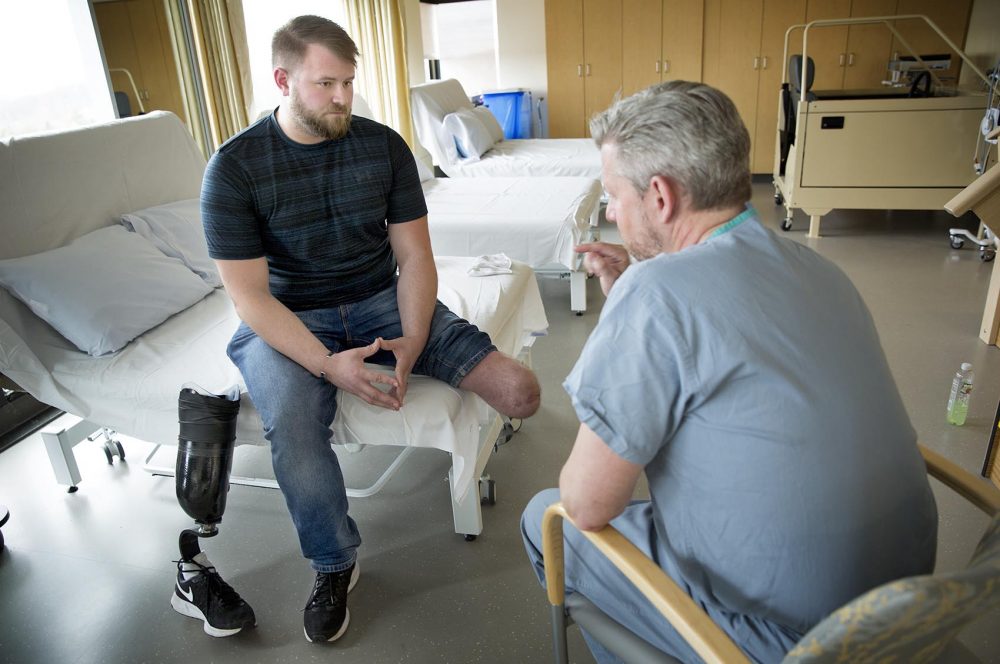How The Marathon Bombing Helped Bring Innovation To Amputation

Brandon Korona, an Army veteran whose left leg was injured in an IED explosion in Afghanistan, talks with Dr. Matthew Carty at Brigham and Women’s Faulkner Hospital in Boston. Photo by Robin Lubbock for WBUR
Army veteran Brandon Korona pulls up his pant leg, rearranges a protective sleeve, and twists off the plastic socket on top of his prosthetic left leg. It comes off with a suction cup-like pop.
“There we go,” says Korona.
As Korona gets comfortable in a physical therapy room at Brigham and Women’s Faulkner Hospital, Dr. Matthew Carty pulls up a chair and examines the end of the residual limb, poking and prodding the stump that ends about four inches below Korona’s knee joint.
“It’s looking good, Brandon,” says Dr. Carty, who’s director of the Lower Extremity Transplant Program at the Brigham. “This little wrinkled area, we’re going to fix that up. But things look really good. … [T]hings are nice and soft.”
